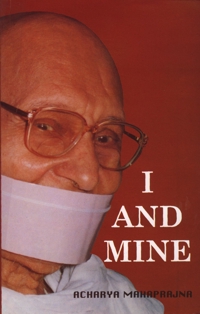
All such relations are merely combinational; they are not based on human considerations. In the world of words also there are lots of combinations. Pure or single words are fewer in number. There are three kinds of words: roots, combinations or compounds and mixed. Most of them are either compounds or mixed.
Social consciousness is influenced by tradition. No one can survive by abandoning it. A man is enjoying all modern facilities like a personal car, radio etc., but if he is deprived of the sympathy of his father, he will feel like living in a prison. Everyone needs love. In its absence a man sometimes feels bored. Sympathy seems to be essential to relate people living on the social plane. Freedom from attachment and hatred is very good, but its ostentatious form - glorification of self - is not good. Do statements like 'I drank' my bullock drank,' 'Let the well sink', constitute or indicate freedom from attachment and hatred? It is merely gratifying one's selfishness. Selfishness leaves no room for caring for others. On attaining freedom from attachment and hatred the activity of 'being' becomes so strong that no room is left for sensibility or experience. Problems arise where there is sensibility and where there is no room for togetherness.
Two men sat in each other's company. One man's eating cannot remove the hunger of the other. Food satisfies the hunger only of the person who eats, and hunger is satisfied proportionate to the amount of food eaten. One cannot deny this individual limitation. However, eating together gives mental satisfaction. The feeling of satiety, both physic, and mental, comes as a result of togetherness or 'Sah'. Wherever there is 'Sah' problems get solved. People of lower status think those of higher status are not with them. Younger people think those who are old are not with them. There is no togetherness even when they live together. This feeling of separateness puts a question mark on sociality. Social harmony is possible only if that question is solved:

I find the above Vedic hymn very attractive. In Jain Sutras, there is a mention of Sadharan Sharirijeeve 188b, which means many living creatures within one body. They eat, breathe, experience happiness or sorrow and die together. The world will be metamorphosed if the above traits were to be shared by man. Even a lower order analogue of the above, the universalization of the feeling that 'This work of mine will cause anguish to others' will remove cruelty from society.
So long as the above state is not created, many factors capable of causing mental restlessness keep presenting themselves. Many a time we become one-sided. Sometimes we stop short of the motive and at other times go as far as the material cause. Neither of them singly is adequate. Action requires the combination of both. Absence of any one of them renders the action impossible.
There is a principle of Naturopathy that any external factor becomes instrumental in the emergence of disease if its material cause is present inside the body. No external instrumentality can cause disease if the internal material cause is absent. It is the combination of the two which makes the disease manifest.
Everybody has in him the feeling of non-violence or compassion as well as that of hatred. They emerge only when some external instrumentality is there.
Today people are using the Anuvrat platform for thinking of an experimental form of religion or the formation of a non-violent society.
In this context I want to say that peace cannot be achieved without removing the spiritual delusion caused by high selfishness or in other words without extending the bounds of sympathy.
 Acharya Mahaprajna
Acharya Mahaprajna



